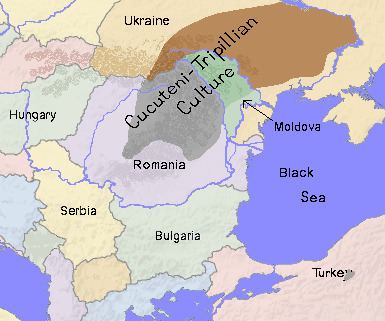 | ||
The 5th millennium BC saw the spread of agriculture from Western Asia throughout Southern and Central Europe.
Contents
- Fertile Crescent
- Egypt
- China
- Europe
- Events
- Inventions discoveries introductions
- Environmental changes
- Calendars and chronology
- Biblical chronology
- References
Urban cultures in Mesopotamia and Anatolia flourished, developing the wheel. Copper ornaments became more common, marking the beginning of the Chalcolithic. Animal husbandry spread throughout Eurasia, reaching China. World population grew slightly throughout the millennium, possibly from 5 to 7 million people.
Fertile Crescent
Egypt
China
Europe
Events
Inventions, discoveries, introductions
Environmental changes
Calendars and chronology
Biblical chronology
References
5th millennium BC Wikipedia(Text) CC BY-SA
